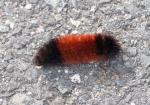COLUMBIA, Mo.– Missouri sorghum growers may find white sugarcane aphids gumming up harvest equipment and reducing yields this fall, says University of Missouri Extension entomologist Wayne Bailey.
The bugs are moving northward from southern states. They were found in Louisiana, Texas, Oklahoma, Mississippi and Arkansas last year.
Discolored leaves and sticky plants are telltale signs of infestation. The tiny bugs are difficult to see. Their bites tear leaves and damage plant cells. They suck juices through their straw-like piercing mouths and excrete a sugary, sticky liquid waste called honeydew that clogs up combines.
Without chemical applications, the bugs multiply quickly. Bailey says a 40 percent economic threshold suggests spraying with pesticides.
The bugs may have changed their host species from sugarcane to grain and forage sorghums, including most sorghum-Sudan grass crosses, which are genetically similar. They also damage Johnson grass and dallisgrass. Last year Texas A&M Extension reported the bugs reduced yields by up to 50 percent in infested sorghum fields.
They are gray to tan or light yellow and have dark feet. At the rear they have dark structures called cornicles that look like tailpipes. Under ideal conditions, populations of the sugarcane aphid double every five to seven days.
These tiny bugs cause big problems, Bailey said.
For more information from MU about pest management, go to http://ipm.missouri.edu.
Read more http://extension.missouri.edu/news/DisplayStory.aspx?N=2459






